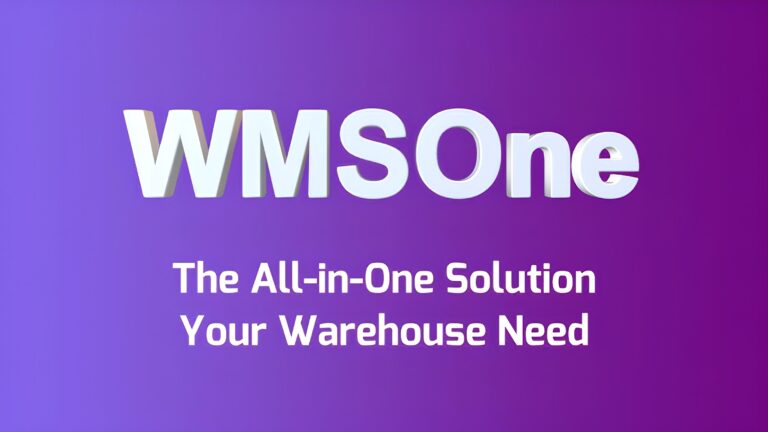Navigating the Future:Top Logistics Trends to Watch in 2024
- Why WMSOne Stands Out In Warehouse Management - December 30, 2024
- The Future of Warehouse Inventory Management in 2025 - December 9, 2024
- Cold Storage Warehouse: Keeping Food Fresh And Safe - October 3, 2024
Top logistics trends to watch in 2024 are set to revolutionize the supply chain, driving efficiency, innovation, and adaptability in an ever-evolving global market. In 2024, the logistics industry is undergoing rapid transformation due to emerging technologies, shifting consumer demands, and global changes. Staying ahead of these logistics trends is essential for businesses to remain competitive.
Let’s explore the top logistics trends that will shape the future and redefine supply chain operations.
1. Embracing Supply Chain Agility: Adapting to a Fast-Paced Market
In an era where market conditions can change overnight, agility in the supply chain has become non-negotiable. Supply chain agility is all about the ability to quickly adapt to fluctuations in demand, supply chain disruptions, and unexpected global events. Companies that master agility can pivot strategies, reallocate resources, and optimize operations to maintain efficiency and customer satisfaction.
Key Takeaways:
- Flexibility: Adapt quickly to market changes.
- Strategic Planning: Develop contingency plans to mitigate risks.
- Technology Integration: Utilize advanced tools to enhance responsiveness.
2. Addressing Global Labor Shortages: Innovating Workforce Strategies
The global labor market is under strain, with labor shortages posing a significant challenge. Factors such as an aging workforce, pandemic aftershocks, and shifting demographics are driving businesses to rethink workforce strategies. Companies are increasingly turning to automation, workforce planning, and flexible labor models to bridge the gap and maintain productivity.
Key Takeaways:
- Automation: Invest in technology to reduce dependence on manual labor.
- Workforce Planning: Implement strategic hiring and training programs.
- Flexible Labor Models: Consider gig economy workers and remote teams.
3. Navigating Automation Complexity: Balancing Benefits and Challenges
Automation in supply chain management is a double-edged sword. While it offers immense benefits like increased efficiency and reduced costs, the integration of technologies such as robotics, AI, and IoT can introduce complexity. Companies must carefully plan and execute their automation strategies to fully capitalize on these advancements.
Key Takeaways:
- Strategic Investment: Prioritize automation investments with clear ROI.
- Expertise Development: Train teams to manage and maintain new technologies.
- Continuous Improvement: Regularly assess and optimize automated processes.
4. Demands for Real-Time Data: Leveraging Insights for Quick Decision-Making
The need for real-time data has never been more critical. In today’s fast-moving market, businesses require up-to-the-minute information to make informed decisions. The rise of advanced analytics, IoT devices, and cloud-based platforms is enabling companies to gain continuous insights into their supply chain operations, driving more effective and agile decision-making.
Key Takeaways:
- Advanced Analytics: Use data-driven insights to anticipate trends.
- IoT Integration: Implement sensors and devices for real-time monitoring.
- Agile Decision-Making: Enhance responsiveness with timely data.
5. Enhancing Supply Chain Transparency: Building Trust and Collaboration
Transparency within the supply chain is critical for fostering trust and collaboration among partners. Companies that prioritize openness in processes, practices, and data sharing are better positioned to build strong relationships with suppliers, customers, and stakeholders. This transparency is particularly vital in ensuring compliance, sustainability, and ethical practices across global supply chains.
Key Takeaways:
- Open Communication: Share relevant information with supply chain partners.
- Sustainability Practices: Ensure transparency in environmental and ethical standards.
- Compliance: Maintain clear and open records to meet regulatory requirements.
6. Rising Demand for Less Than Truckload (LTL) Shipping: Adapting to E-Commerce Growth
The surge in e-commerce has led to a growing demand for Less Than Truckload (LTL) shipping. Businesses are increasingly required to ship smaller quantities more frequently, and LTL offers a cost-effective solution. By optimizing LTL strategies, companies can enhance delivery times and reduce shipping costs, making it a critical trend for 2024.
Key Takeaways:
- Cost Efficiency: Utilize LTL to reduce shipping expenses.
- Faster Deliveries: Meet consumer demand for quicker shipments.
- Strategic Partnerships: Collaborate with reliable carriers for consistent service.
7. Digital Evolution in Business: Transforming Supply Chains with Technology
Digital transformation is now a cornerstone of modern supply chains. Businesses are adopting digital tools and platforms to streamline operations, improve visibility, and make data-driven decisions. This digital evolution is no longer optional but essential for staying competitive in a rapidly changing market.
Key Takeaways:
- Technology Adoption: Embrace digital tools for enhanced efficiency.
- Process Automation: Streamline repetitive tasks through automation.
- Data Visibility: Improve tracking and monitoring across the supply chain.
8. API-Based Integrations: Enabling Seamless Connectivity Across Systems
API-based integrations are revolutionizing supply chain management by allowing seamless connectivity between various systems and stakeholders. This enhanced connectivity leads to better data sharing, process automation, and coordination, resulting in more cohesive and efficient supply chain operations.
Key Takeaways:
- Enhanced Connectivity: Use APIs to link different systems and platforms.
- Process Automation: Automate tasks for greater efficiency.
- Improved Coordination: Foster collaboration through seamless data sharing.
9. Accurate Demand Forecasting: Leveraging AI and Analytics
Accurate demand forecasting is essential for effective supply chain management. By leveraging advanced analytics and AI, businesses can predict future demand more accurately, enabling better inventory management, reduced waste, and improved customer satisfaction.
Key Takeaways:
- AI Integration: Utilize AI for more precise forecasting.
- Inventory Optimization: Align inventory levels with predicted demand.
- Customer Satisfaction: Meet consumer needs with timely and accurate fulfillment.
10. Digital Freight Marketplaces: Transforming Transportation Services
Digital freight marketplaces are changing the way businesses find and book transportation services. These platforms offer a more transparent, efficient, and competitive marketplace, enabling companies to optimize their logistics operations and find the best shipping options available.
Key Takeaways:
- Transparency: Benefit from clear and competitive pricing.
- Efficiency: Streamline the transportation booking process.
- Optimization: Find the best routes and carriers for your needs.
11. Ecosystem Integration: Creating a Cohesive Supply Chain Network
Building an integrated supply chain ecosystem involves connecting various stakeholders, systems, and processes into a unified network. This integration enhances collaboration, improves data accuracy, and streamlines operations, leading to more efficient and resilient supply chains.
Key Takeaways:
- Strategic Planning: Develop a roadmap for ecosystem integration.
- Technological Infrastructure: Invest in the right tools and platforms.
- Collaboration: Foster strong relationships with all supply chain partners.
Embrace the Future of Logistics
Embracing the top logistics trends of 2024 will redefine your supply chain’s success and position you ahead in a rapidly evolving market. As 2024 unfolds, the logistics industry is set for a transformative journey. Success lies in embracing agility, innovation, and digital integration. Businesses that adapt to these trends will not only overcome challenges but also unlock new growth opportunities. The future is bright—seize it by staying informed, proactive, and ready to lead in this evolving global market.
Simplified Core Ideas:
- Adaptability: Quickly respond to changes.
- Labor Strategies: Innovate to overcome workforce challenges.
- Technology Integration: Navigate the complexities of automation and digital tools.
- Real-Time Data: Utilize instant information for agile decision-making.
- Transparency: Foster trust through openness.
- LTL Shipping: Adapt to the demand for smaller, frequent shipments.
- Digital Transformation: Embrace technology for supply chain evolution.
- API Connectivity: Seamlessly connect systems for better operations.
- Accurate Forecasting: Leverage AI for predicting future demand.
- Freight Marketplaces: Optimize transportation services online.
- Unified Ecosystem: Integrate all parts of the supply chain for better collaboration.
Understanding and adapting to the top logistics trends will position businesses to thrive in the ever-evolving supply chain landscape of 2024.
Contact us today for a Free Consultation to unlock a new era of efficiency in your international operations. Let’s embark on a journey towards global success







